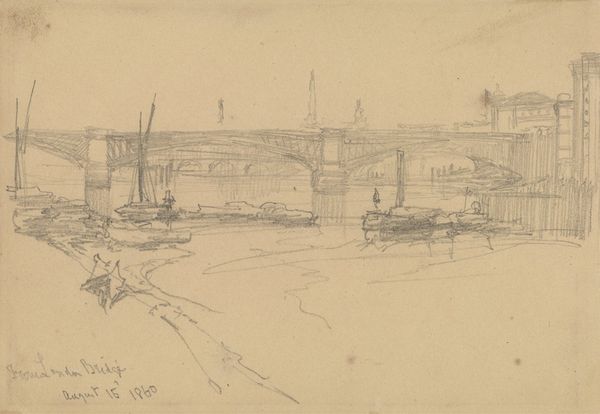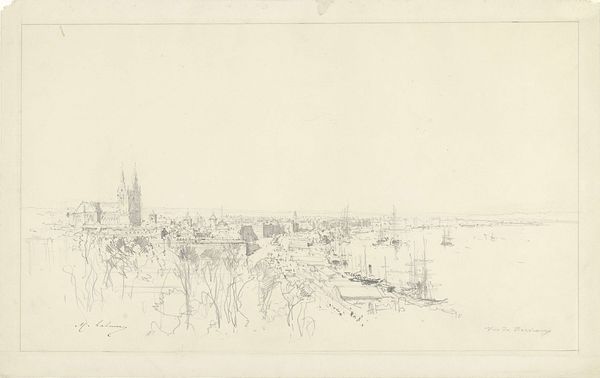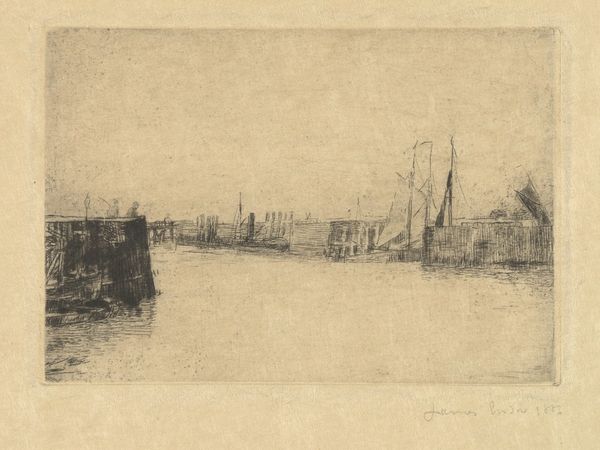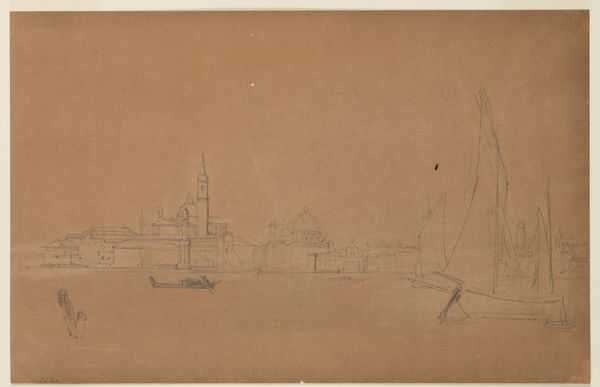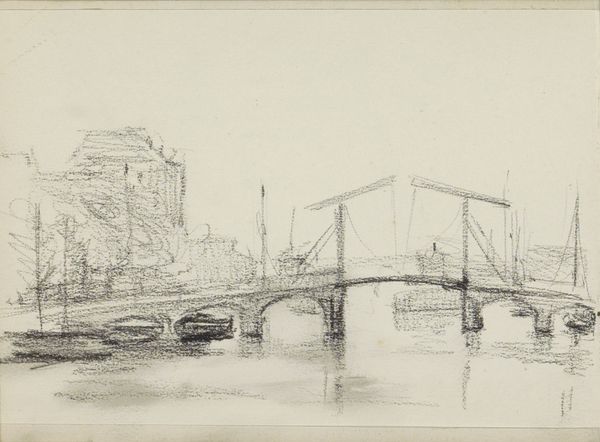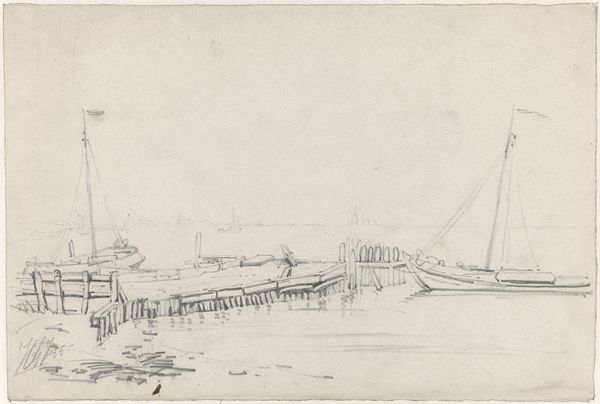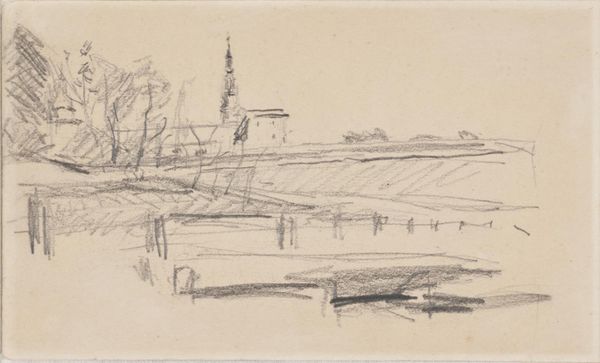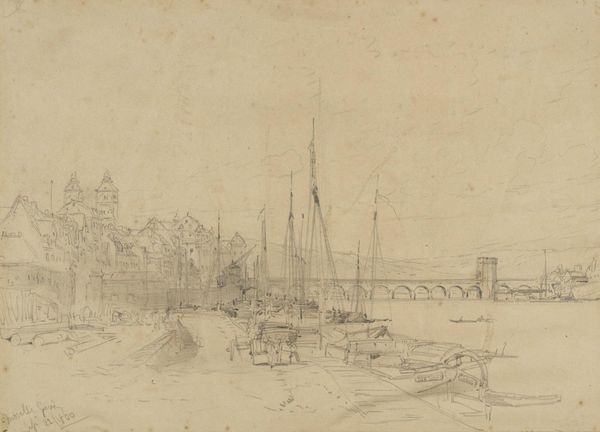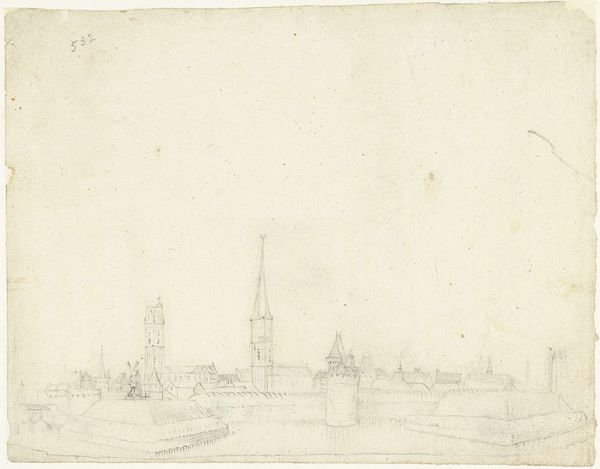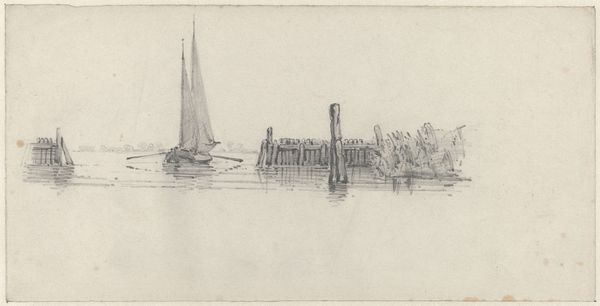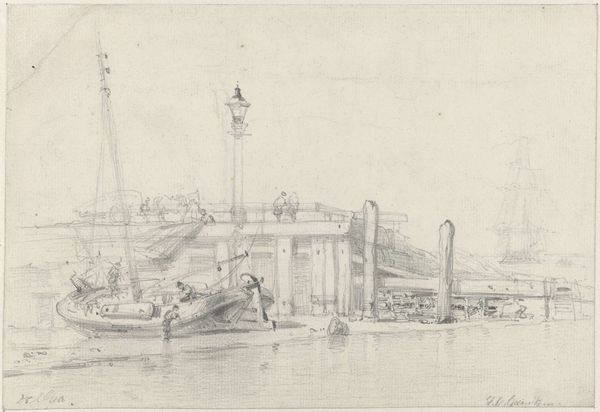
drawing, pencil
#
drawing
#
landscape
#
pencil
#
cityscape
Copyright: Public Domain: Artvee
Curator: Well, look at this gem – David Roberts' "Inverness," crafted in 1859 using pencil on paper. I must say, it evokes a feeling of stillness, like holding a whispered memory. What's your take on this drawing? Editor: It gives me pause, this tranquil cityscape. There’s something deeply unsettling about such quietude in a port city. Given the year, I can't help but think about the ongoing subjugation through colonization and how this serene harbor may serve an imperial agenda. Curator: Oh, certainly, we must never shy away from uncomfortable truths, and it is easy to forget such an idea if all we observe the pencil work. But there is a kind of melancholy beauty that floats through the shading; the lines so faint you wonder if they’re about to disappear altogether. Does the weight of its history make that harder to see for you? Editor: Not necessarily harder, but perhaps it shifts the interpretation. When I observe how lightly the masts and rigging are depicted, I cannot avoid the history of exploitation intrinsic to these merchant ships. If we confront it head-on, can we find moments of resilience in artistic representations of difficult histories? How do ordinary folk resist such a heavy colonial inheritance? Curator: It is strange, isn't it? Because while the sharp spires almost look ready to break into the sky, there are still those fragile lines suggesting movement and, perhaps, progress. I would assume the inhabitants must find some agency and enjoyment in life regardless of history. Editor: Agreed, although the weight of context certainly colours my perspective. There is always an interesting dichotomy when encountering beauty paired with oppression: Roberts made several similar drawings depicting port cities worldwide. His output illustrates the sheer geographic scale of colonization by 1859. How should that fact influence our encounter? Curator: It encourages contemplation for certain, and for what its worth, perhaps Roberts sought not to celebrate these cityscapes, but simply hold up a mirror for our relection and thought. To make these statements to each other, perhaps. I know I certainly will ponder that from now on. Editor: Indeed, the act of contemplation itself becomes a radical practice. It allows for dialogue, inviting critical engagement rather than passive acceptance of colonial legacies embedded in the artwork itself. Thank you for letting me share in this reflection.
Comments
No comments
Be the first to comment and join the conversation on the ultimate creative platform.
